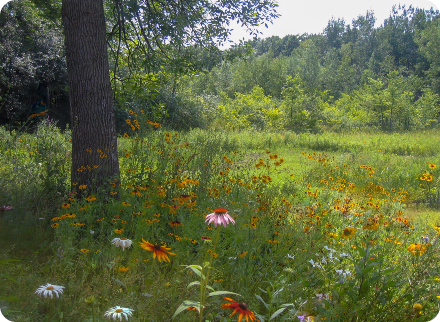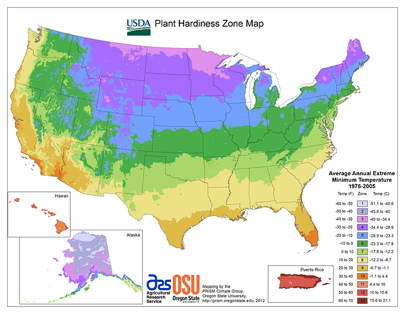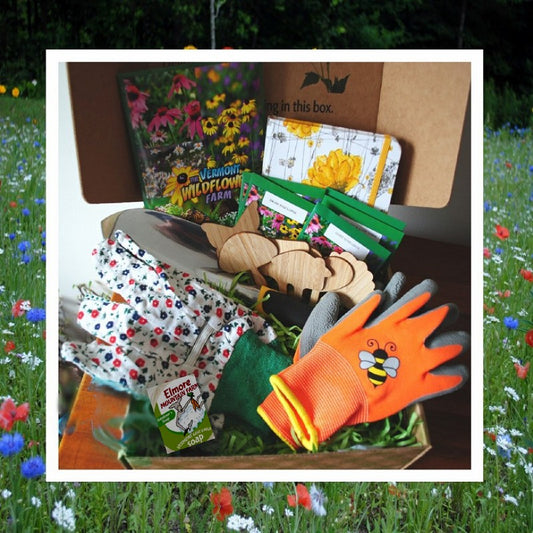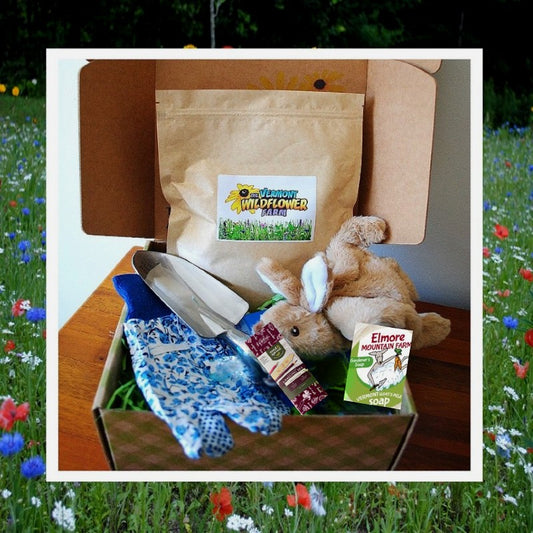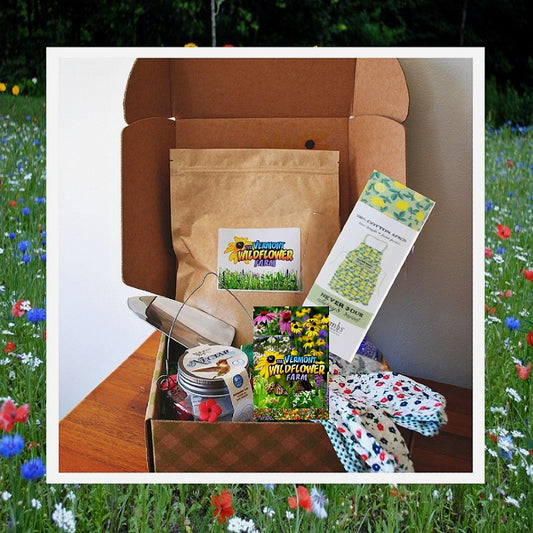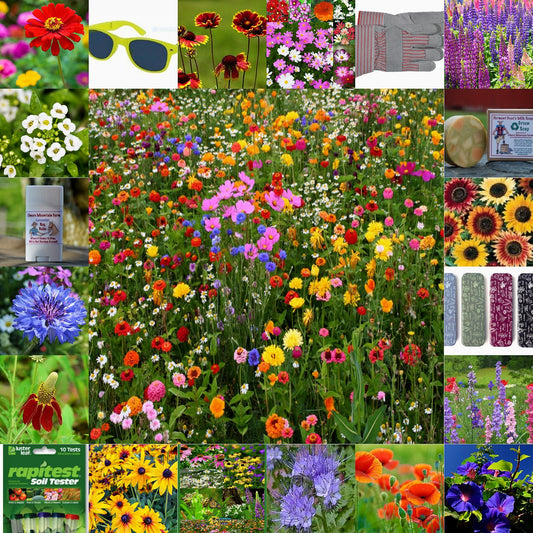Planting & Info Guides | Flower Bulb & Perennial Guides
Planting Depth Guide
| Type | Depth | Type | Depth |
| Dahlia | 2"-3" | Anemones | 2"-4" |
| Gladiolus | 4"-6" | Freesia | 1"-2" |
| Begonia | 1"-2" | Crocosmia | 5" |
| Calla Lily | 3" | Ixia | 2"-3" |
| Lilium | 6"-8" | Elephant Ear | 4" |
| Canna Lily | 3"-4" | Tigridia | 3" |
| Astilbe Bare Roots | 1"-2" | Peony Bare Roots | 1"-2" |
Shipping Schedule
| Type | Shipping Begins |
| All Bulbs & Plants | March - May |
| Trillium | Spring |
| Grasses | April |
We do ship to Alaska & Hawaii by USPS 2nd Day only for bulbs/bareroots. Seed products ship as normal. Before checking out, please e-mail us for a shipping quote if your order contains bulb/plant products.
Bulb & Plant Products Cannot be Shipped to Canada or Any Foreign Country!
Bulbs
Properly preparing the soil for bulb planting is important. Good soil drainage is essential in raising bulbs. If you have a soil with a high clay content, it can be improved by adding compost, peat moss or some other source of organic material. The organic material should be worked in the top twelve inches of soil (eighteen inches is even better).
Summer and fall flowering bulbs do not need additional fertilizer however you can fertilize monthly from shoot emergence until the plants reach full flower. Apply seven tablespoons of 10-10-10 soluble fertilizer (or equivalent bulb fertilizer) split over two or three applications over a ten square foot area. Once in full flower, no extra fertilization is necessary.
The optimum pH range for bulbs is 6 to 7. If you are not sure of your soil, then a soil test of the planting area can be done to determine if lime needs to be applied to adjust the soil pH. If needed, limestone should be worked into the soil.
Before selecting the location to plant bulbs in the landscape, consider the light requirements of the plant. Does the plant require full sunshine, partial shade or full shade? Many summer blooming bulbs require full sun or partial shade. Well drained soil is a must.
Planting depth for spring to summer bulbs have varied planting requirements. For planting depth of summer blooming bulbs, consult the information supplied with the bulbs.
Water the bulbs following planting. This will help settle the soil in the planting bed plus provide needed moisture for the bulbs to start rooting. Avoid over-watering at planting time since this can result in bulb rot.
For both spring and summer bulbs, start watering when the flower buds first appear on the plant if the soil is dry. Shallow watering will not do the job. Remember that the bulbs may have been planted 6 to 8 inches deep and the water needs to soak to that depth. Through the bud, bloom and early foliage stage, add about one inch of water per week if this amount has not been supplied from rainfall. Water with a soaker hose to keep water off the bloom. Shallow planted bulbs will rot quickly if over-watered in the heat of summer.
Some of the summer blooming bulbs like dahlias and gladiolus occasionally need extra support to be able to remain erect. Stakes will work for this purpose. Drive stakes in place at planting time to avoid accidental damage to the bulbs or tubers.
The bulb bed should be covered with two or three inches of mulch. Mulch will help minimize temperature fluctuation and maintain an optimal moisture level in the planting bed. The small, early booming bulbs should not be mulched.
You should wait until all chance of frost has passed and in colder areas that can be closer to the end of May. In the meantime, if you have received your bulbs, you must store them properly until planting. All bulbs should be kept dry and cool. You do not want them to sprout before planting. If they do, be very careful not to break the sprouts or the bulb will no longer be any good.
Make sure your cool place is not a freezing place. If you are still having cold weather don’t store them where the temperature dips below 32 degrees. Ideally, 35-45 degrees is best. Each type of spring planted bulb (summer blooming) has it’s requirement for storage. See our easy storing chart for proper temps.
Dahlias – between 35 and 45 degrees
Gladiolus – between 35 and 45 degrees
Lilies – between 35 and 45 degrees
Calla Lily – around 65 degrees
Canna Lily – around 50 degrees
Perennials – between 35 and 45 degrees (cool is better – but do not allow to freeze)
Most summer flowering bulbs should be dug and stored when the leaves on the plants turn yellow. Use a spading fork to lift the bulbs from the ground. Wash off any soil that clings to the bulbs, except for bulbs that are stored in pots or with the soil around them. Leave the soil on achimenes, begonia, canna, caladium, dahlia and ismene bulbs. Store these bulbs in clumps on a slightly moistened layer of peat moss or sawdust in a cool place. Wash and separate them just before re-planting.
Store bulbs according to our easy storage temperature guide. Inspect your bulbs for signs of disease. Keep only large, healthy bulbs that are firm and free of spots. Discard undersized bulbs. If you have only a few bulbs, you can keep them in paper bags hung by strings from the ceiling or wall. Store large numbers of bulbs on trays with screen bottoms. Separate your bulbs by species or variety before storing them.
Be sure that air can circulate around your stored bulbs. Never store bulbs more than two or three layers deep. Deep piles of bulbs generate heat and decay.
Common Questions
Spring planting bulbs are bulbs that should be planted in the spring and bloom in the summer. The number of spring bulbs is quite extensive, but the most popular varieties include gladiolus, begonias, dahlias, lilies, freesia, anemone, tigridia, acidanthera, montbretia, sparaxis, iris, brodea, liatris, and callas. These bulbs and tubers generally originated from the sub-tropical regions of the world such as South Africa and South America. Therefore, they like warm temperatures and humid conditions and are usually not winter hardy.
In general, look for firm and healthy bulbs. Bulbs that are mushy usually have not been kept in a cool dry place and will rot and therefore not flower. When buying tubers, look for tubers with 3 to 5 eyes and initial root formation.
Spring planting, summer flowering bulbs and tubers can be planted in the spring when you are certain the ground will no longer freeze in your area. This may be up until the end of May depending on your area.
The rule of thumb is to plant the bulb or tuber about 5 inches deep. Exceptions include Dahlias and Begonias which should be planted just beneath the surface.
For smaller varieties, 4 inches is a good interval, 5 inches apart for gladiolus and 10 inches for begonias. Lilies should be about 12 inches apart and dahlias as much as 16 inches apart. For uninterrupted color, they can be planted even closer together.
Once your bulbs have finished blooming, they can often be used again the following year. With the exception of lilies, the bulbs have to be taken out of the ground if it freezes in your area during the winter. If it does freeze in your area, let the leaves die down naturally, then dig up the bulbs and store in a cool dry place and replant the following spring.
PERENNIALS
Technically, perennials are plants that live and bloom for more than 2 years. This is in contrast to annuals that live for one year and die. Some varieties of perennials are short-lived (lasting 3-4 years) but most have very long-life spans such as peonies which have been known to live 100 years or more! Perennials come in all shapes, sizes, and colors. The best thing about perennials is that you only have to plant them once and then they come back bigger and better every year. What a great investment! An important distinction between annuals and perennials is that most perennials need to be vernalized (exposed to cold temperatures for a prolonged period of time) in order to bloom every year. Most perennials bloom once per season, but some re-bloom again in late summer or fall. New advancements in hybridizing are expanding the population of perennials that bloom continuously for many months at a time. Other perennials, such as hostas and ferns, are grown for their decorative foliage rather than flowers.
There are lots of ways to use perennials in your yard, garden or landscaping. Mixing up the gardens is very popular by combining annuals with perennials, and woody plants. Single varieties of perennials are sometimes planted in large patches alongside a driveway or fence line. You can fill planters with a mix of annuals and perennials which has become increasingly common in modern landscapes. Of the many perennials available today, there is something for every growing environment: sun, shade, hot & dry, cold & wet, and everything else.
Our perennials come in three forms: bare roots, plant plugs or potted plants. You will find this information on each species pages. We select the form in which the plant will be shipped to you for specific reasons. Since the shipping of plants is a delicate matter and great care must be taken, we select each species by 2 criteria; what is better for that species performance wise i.e. better started as a bare root or plug or potted or what is better for that species shipping wise depending on growth rates of a particular variety. For example, we ship Columbines as plant plugs since they are just breaking dormancy and have small top growth as a plug vs. a more mature potted plant which is delicate and would get damaged during shipment. Baptisia, for example, is shipped as a bare root because they have more eyes, and are bigger and better when grown from a bare root than receiving one as a plug or potted plant etc. etc.
A bare root is the root of a plant in a dormant state, and depending on the species, will have eyes or sprouts. It is a plant that is sold with the roots exposed, rather than potted in soil. Bare roots are healthy and usually grow quickly depending on the species. A plant plug is the general term for seedlings or rooted cuttings that have been started in trays of individual cells. Plant plugs have healthy root systems and can be dormant or breaking dormancy. Plugs and bare roots are the most economical way to purchase perennial plants. A potted plant is one that is usually in a 4-6” pot and is well on its way to growing. We rarely offer larger potted plants but those we do offer are those that need a head start, like hydrangeas or other bush-type plants because of their longer growth time.
Vermont Wildflower Farm has a strong commitment to provide only the most healthy, vigorous stock to our customers. We are committed to only offering plants that our customers will be successful with. We have built our reputation by offering a wide variety of items to choose from, only the finest quality and we stand firmly behind our product. We offer superior customer service and we, like you, are gardener’s too, so we won’t sell you anything that does not meet our high standards and that we would not plant ourselves. In fact, all of our products are planted at our homes and our business. If something does not meet your expectations or does not grow, just call or e-mail us so we can assist you. We are also available 7 days a week to offer advice, answer questions or help you plan your gardens. Your success is our success!
- Perennials are colorful flowers and vibrant foliage that come back year after year. You should decide what type of garden you want and where you wish to locate your garden, so you have the most effect and enjoyment. Your perennial plants should be provided as best you can with the right soil, light and water. In doing so you will enjoy a fairly maintenance free area for years to come.
- Prepare your garden soil in spring as soon as you can work the soil. This usually occurs after the last frost of winter. Dig and turn your soil at least 8 inches for perennial plants. Add nutrients to the soil if need be. You can do this by simply mixing in 3-4 inches of compost.
- Plan your flower bed according to height with the taller flowers in the back and shorter in the front or plan individual groupings.
- Ensure you have a season-long display by choosing varieties that bloom at different times. Most perennials bloom for just a few weeks. Example: Peonies in spring, tiger lilies during the summer, and purple coneflower in early autumn will ensure flowers all season.
- Group your plants by their light and water requirements. Most perennials like at least six hours of sun each day. Some, like columbines, will tolerate shade. Plant drought-tolerant varieties, like candytuft and tickseed close to each other. Bellflowers and asters need regular water and could be grouped together etc. etc.
- Leave enough space between plants to allow them to grow. Plant perennials at least as far apart as the plant's mature spread. If the tag doesn't show the spread, set your plants 18 to 24 inches apart.
-Dig a hole for each plant as deep as the pot it came in and add a bit of fertilizer. Hold the plant loosely at its base, up-end the pot and slide out the plant. Gently spread the roots and set the plant in the hole, making sure that the top of the plant's root ball is not below the surface.
-Fill in the hole and water the plant thoroughly to establish the roots. Applying mulch around the base of the plant will help to preserve moisture and discourage weeds.
Arrival of Your Shipment
• If you are unable to plant right away, we suggest the following:
• Store your bare root or plug perennials for a short time at a temperature between 35 and 40 degrees Fahrenheit. A cool basement is perfect.
• Open the boxes for good air circulation to discourage surface mold growth. (surface mold is not harmful to firm and otherwise healthy-looking roots and can be rinsed away prior to planting)
• Many perennial varieties including berries may not have visible top growth when received. This does not mean the plants are dead. These cultivars emerge from root or tubers and are late to break dormancy. Rest assured, that just because there are no leaves or top growth, the roots are healthy and ready to be planted. Be patient. To assist in their breaking of dormancy, warmer night temperatures of 65-70 degrees will help. Once ready to plant your new perennials, make sure you take a few steps to ensure success:
• Plant as soon as you can. Make sure you wait until all chance of freezing weather has passed. If it takes a bit longer in your area, let your perennials get some sun and keep moist. (Do not over water your perennials. Leave your bare roots in their package. If you notice the contents becoming dry, moisten with a spray bottle but do not soak the bag and packing material/soil. You can transplant you plugs if you need to into gallon size containers until you can get them outside.
• Make sure you choose the right spot for your plant.
• Plant according to tag instructions.
• Make sure you follow moisture requirements for your new perennials.
• Don’t pull on any top growth when removing your perennials from their pots, you can damage the plant/stalk.
• Make sure if you have specialized perennials, that you are following care guides for each species.
• Make sure when planting your bare root perennials that they are planted in the proper direction (root ball at the bottom). Some don’t care but others do!
• Stake those plants that need it, like Delphiniums but try to avoid staking those that do not need it.
• Make sure that for taller plants that you fill in some ground – all summer growth to cover the areas once any particular perennial has passed its bloom time.
• Many of our perennial plants bloom for very long periods.
As always, if you have any questions, please just shoot us an e-mail or call us toll-free and one of our experts will be happy to answer your questions!
If you wish your order shipped ahead of the scheduled time by zone/region, just let us know in the comments field at checkout that you wish your order shipped as soon as the products arrive in stock!
BILLING FOR ADVANCE SALES
Your online order for bulbs/bareroots/perennials etc. will be charged to your credit card including shipping at the time of placing the order (advance sale) and the bulbs and/or perennials, bare roots will ship according to the shipping schedule on the guide pages. This is standard practice in the mail-order bulb business. It not only allows us to accurately project inventory but allows us to offer you huge discounts for pre-ordering. If you have seeds on your order, everything will ship together at the time of the plants/bulbs. If you wish your seeds shipped separately, please put a comment at checkout! We fully guarantee all flower bulbs and perennial plants/bareroots under the same terms as our seed products.
SHIPPING INFORMATION (TIMES)
South, Southwest, Western states begin shipping 4/6. You should expect your order within those dates or shortly thereafter.
Lower Midwest, Mid-Atlantic begin shipping 4/15. You should expect your order within those dates or shortly thereafter.
Upper Midwest and Northeast (colder zones) begin shipping 4/20. You should expect your order shortly thereafter. Orders to the Northeast, Mid-Atlantic, Upper Midwest may differ as we reserve the right to delay shipment due to weather fluctuations. DO NOT PANIC about shipping dates. Perennial plants and bareroots can be planted quite late and establish well.
NOTE: Orders for each zone are processed in the order they were received from the advance sale. Example: If you placed an order in March, orders are processed starting with those that ordered in October etc. unless you paid Priority or Expedited Shipping!
Items You May Need
-
Weekend with the Kids Garden Box
We have created this kid's garden box so you can have a great time on the weekends with your kids in the garden. Read MorePrice: $69.95Price:Unit price / per$99.90Sale price $69.95 -
Pet Friendly Garden Box
Our pet friendly garden box contains our Pet Friendly Wildflower seed mix, accessories and some fun things for your dog and cat! Read MorePrice: As Low As: $69.95Price:Unit price / per$99.90Sale price As Low As: $69.95 -
Homeowners Garden Box
A great gift for a new homeowner, neighbors, friends and family! Read MorePrice: $99.95Price:Unit price / per$118.50Sale price $99.95 -
Go Wild Wildflower Seed Kit
A beautiful box full of blooms & garden supplies. Read MorePrice: $99.95Price:Unit price / per$149.20Sale price $99.95
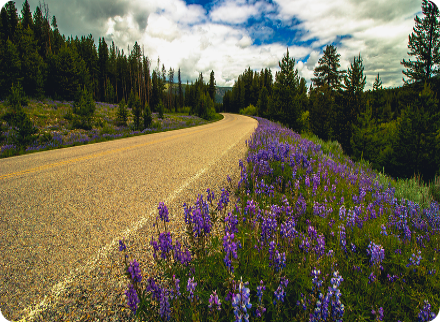
We offer CUSTOM Seed Mixes for All Your Projects!
We've got you COVERED for Landscape
Management, Conservation & More!

